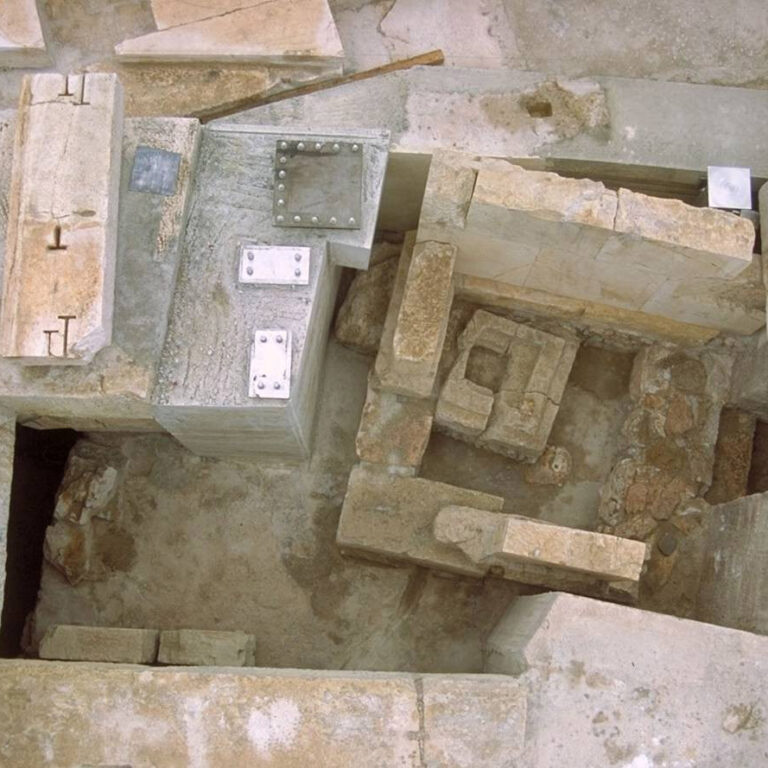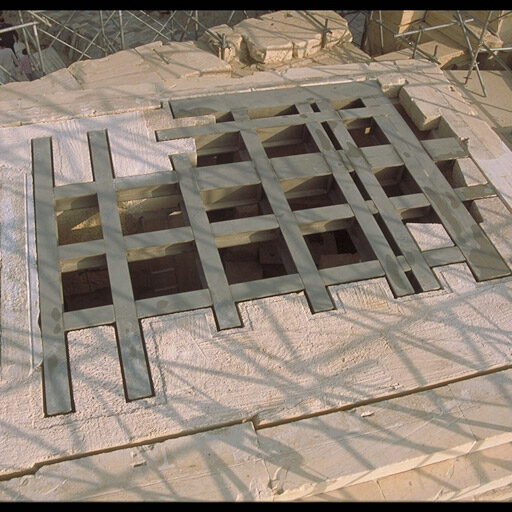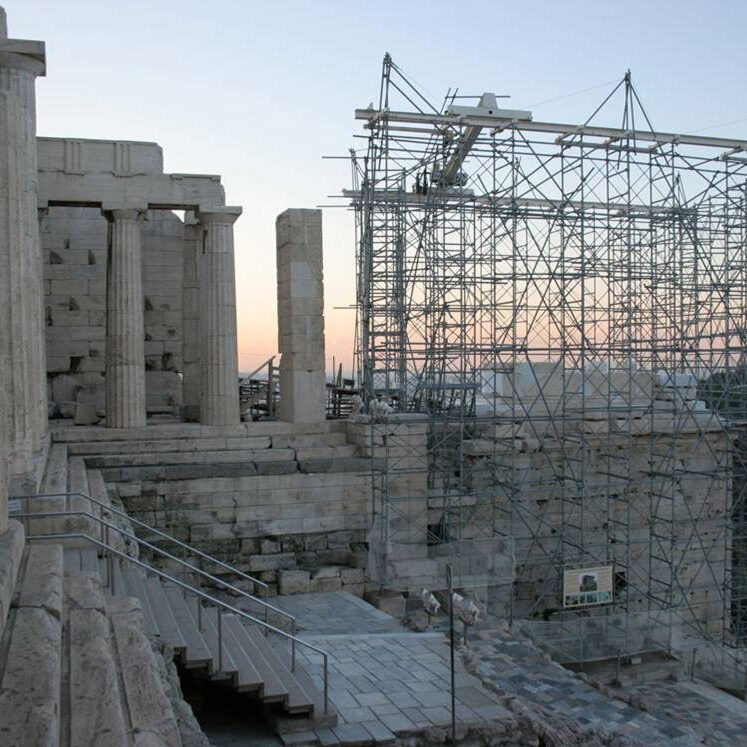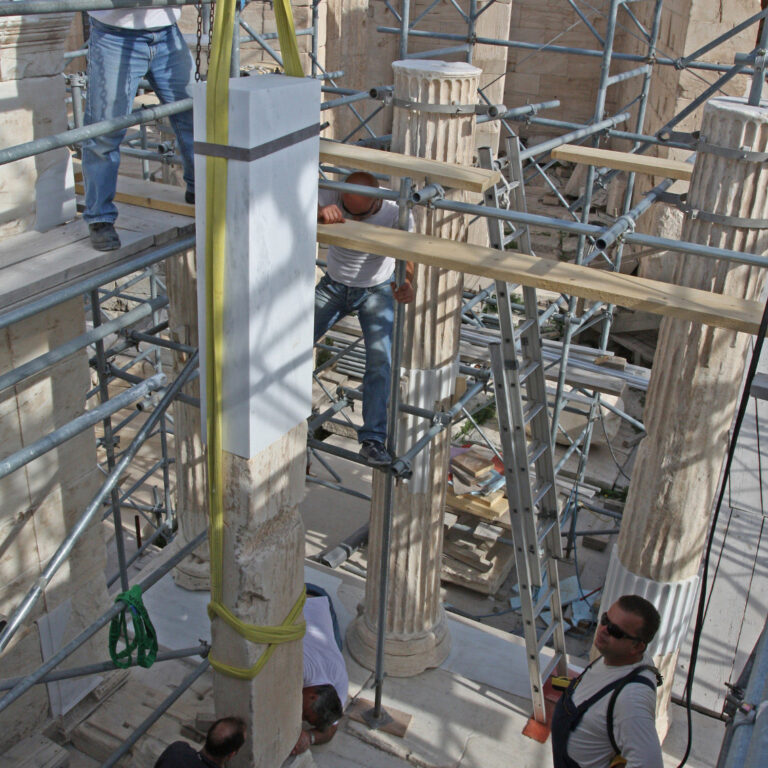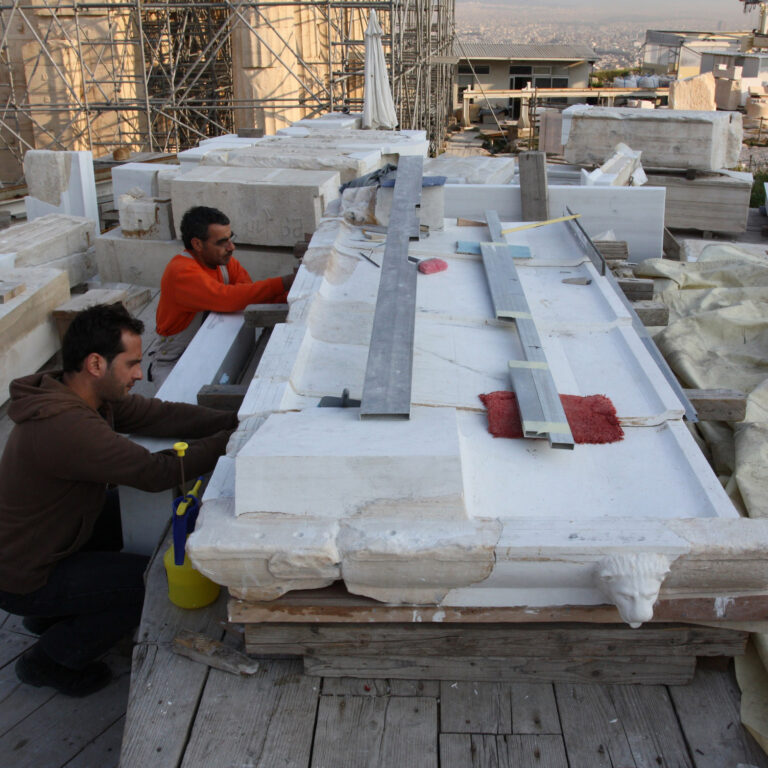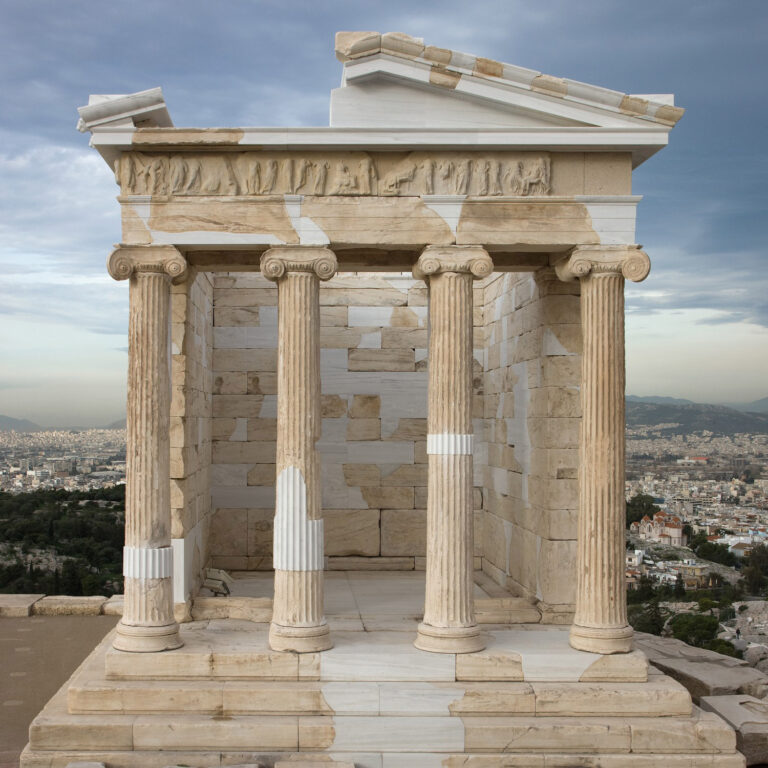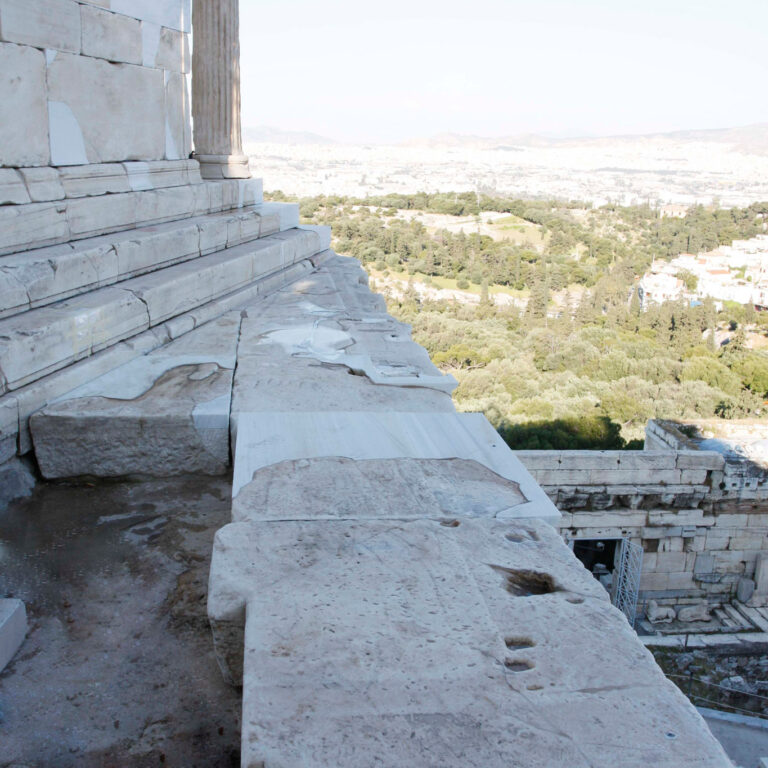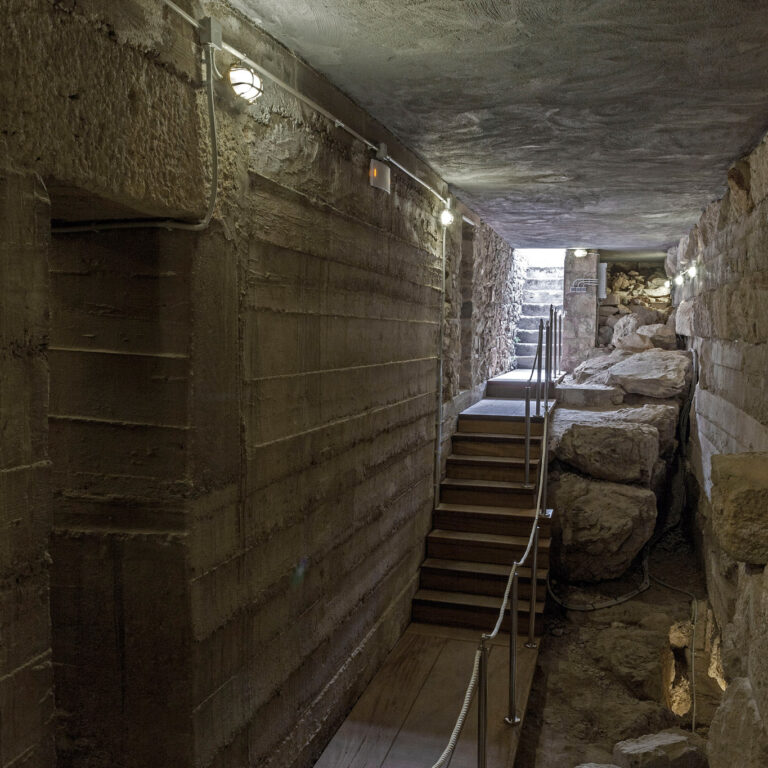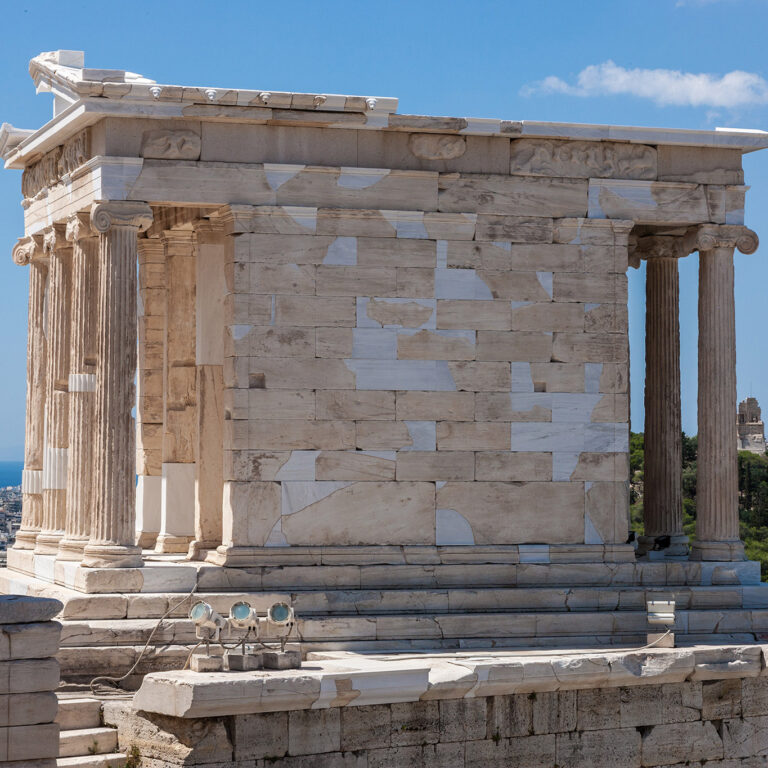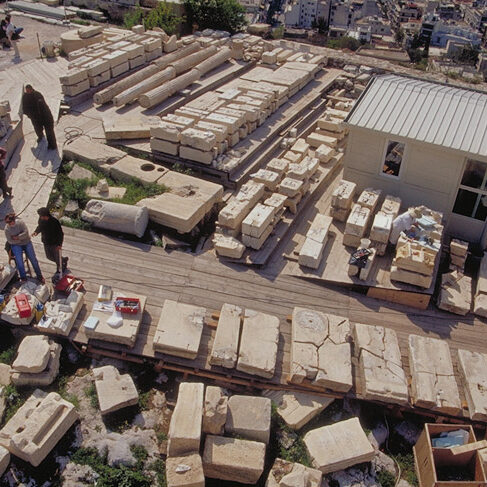
The serious damages and the structural problems that were evident at the Temple of Athena Nike after the previous restoration interventions of years 1835-1845 and 1935-1940, as well as the need to restore architectural members placed incorrectly to their original positions, imposed the third in a series of restoration interventions, with the dismantling, the structural restoration and the re-setting of its 319 members. The new restoration of the monument followed the study of the architect M. Giraud during the period 2000-2010.
The dismantling of the monument began in October 2000 and was completed in 2002. As early as 1998 the original frieze of the temple which is now exhibited in the Acropolis Museum was removed for protection. Around the same time commenced the conservation of the temple’s members, the removal of supplements that did not belong to the monument, the systematic documentation of the interventions as well as the study and the structural restoration of every member. The latter proved particularly difficult because of the fragmentation and the degradation of the members, which were caused by the violent demolition of the monument in the 17th century and the methodology of the previous restorations.
Maintenance and restoration works were realised at the earlier limestone temple of Athena Nike, that is maintained in the underground crypt inside the classical tower, beneath the marble temple, after disassembling the members of the latter. The new restoration was preceded by the erection of the work-site infrastructure and the installation of new crane on scaffolding the design of which responded to the particular position of the monument.
The program also included replacing in 2004 the system of iron girders at the northeast corner of the temple, and the reinforced concrete slab of the Balanos intervention, by a stainless steel grate specially placed beneath the niche of the temple. The infrastructure interventions improved the accesibility of the basement as well as the visibility of the earlier ruins.
The investigation of the dismantled members provided new details that helped the rearrangement of the temple’s blocks, the columns drums (using traces from the construction interventions of the monument during the Medieval and Ottoman periods), the column capitals, the coffered slabs, the blocks of the frieze, the cornice blocks and the pediment of the temple. The re-setting process began in 2004. The restoration of the monument krepis was followed by the repositioning of the temple’s stone walls in their original positions. Finally, the columns of the two facades and the two pillars of the temple were re-erected.
The restoration of the monument was completed in the summer of 2010 with the installation of the architraves of the coffered slabs and the cast copies of the Ionic frieze of artificial stone, which replaced the originals, as well as the restoration of the horizontal cornice, the sima and part of the eastern pediment of the temple, with architectural members of new marble that joined ancient fragments. In the sima supplements the lion heads of the gutters were carved by hand.
The recent renovation of the temple of Athena Nike with the restoration of the temple’s surface and the placement of members in their original locations restored the architecture and geometry of the monument. The restoration of parts of the eastern pediment with the inclusion of important original fragments that hadn’t been used in previous restorations of the monument improves the legibility of architecture, due to the significant morphological and aesthetic improvements to the eastern side.
Between the years 2011 and 2012 the following projects were completed: enhancing the access in the underground crypt inside the classical tower, repositioning after disassembling, consolidating and structurally restoring the four blocks of the north crown of the tower, and enhancing the surrounding area of the temple after the worksite facilities had been removed.
Moreover, within the year 2011, restoration works and the strengthening of the reinforced concrete slab, constructed by N. Balanos eastern of the temple, had to be finalised as they were considered a necessary intervention for static reasons. Finally the study concerning the creation of an area where people could view the temple from the east was also included in the programme; work expected to improve the visitors’ experience of the monument.
Conservation of the Temple of Athena Nike
During the present restoration programme a great number of the architectural blocks were fragmented. The dismantling of the blocks revealed a great number of smaller fragments due to the mechanical pressure from the expansion of the steel junctions.
The time-frame for the completion of the restoration of the temple was tightso, until the completion of the structural restoration, immediate priority interventions are applied to all the blocks. These interventions include the consolidation of areas that are crumbling and pieces that are ready to fall as well as the joining of fragments that were collected while the members were being dismantled. Thorough conservation interventions are being carried out only in areas that will be inaccessible to the conservators after the anastelosis of the temple.
The surfaces of the temple’s columns are in a bad state of preservation with flaking, cracks, many pieces ready to fall off and particularly damaged edges. It was therefore considered necessary to complete the conservation interventions before the columns were reset in place.
The conservation being carried out in the framework of this programme will enable the architectural members to be returned safely to their original positions in the monument.


